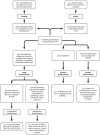Schadenfreude: Malicious Joy in Social Media Interactions
- PMID: 33281661
- PMCID: PMC7689060
- DOI: 10.3389/fpsyg.2020.558282
Schadenfreude: Malicious Joy in Social Media Interactions
Abstract
The paper presents a model of Schadenfreude, pleasure at another's misfortune, resulting in a typology of cases of this emotion. Four types are singled out: Compensation, Identification, Aversion, and Injustice Schadenfreude. The typology is first tested on a corpus of 472 comments drawn from three social media, Facebook, Twitter and Instagram. Then a specific corpus of comments is collected and analyzed concerning a specific case of Injustice Schadenfreude, the posts concerning Brexit, United Kingdom leaving the European Union. From the analysis, it emerges that spatial or factual closeness does not look necessary to feel Schadenfreude. Finally, a lexicometric automatic analysis is conducted on the general corpus of Italian comments collected using several hashtags and enriched by comments about the fire of Notre Dame, showing how even complex emotions like Schadenfreude can be automatically extracted from social media.
Keywords: adaptive functions of emotions; emotion classification; emotion extraction; lexicometric analysis; schadenfreude; social media.
Copyright © 2020 Cecconi, Poggi and D’Errico.
Figures





References
-
- Anderson C. A. (1999). Attributional style, depression, and loneliness: a cross-cultural comparison of american and chinese students. Personal. Soc. Psychol. Bull. 25 482–499.
-
- Benincà P. (1992). Qual è L’invidia che può dire il Nome, in V. D’Urso (a cura di) Imbarazzo, Vergogna ed altri Affanni. Milano: Raffaello Cortina.
-
- Bolasco S., Baiocchi F., Canzonetti A., De Gasperis G. (2016). “TaLTaC3.0, un software multi-lessicale e uni-testuale ad architettura web,” in Proceedings of 13th International Conference on Statistical Analysis of Textual Data, eds Mayaffre D., Poudat C., Vanni L., Magri V., Follette P. Nice: University Nice Sophia Antipolis, 7–10.
-
- Bolasco S., De Gasperis G. (2017). “Taltac 3.0 a web multilevel platform for textual big data in the social sciences,” in Data Science and Social Research – Epistemology, Methods, Technology and Applications (series: Studies in Classification, Data Analysis, and Knowledge Organization), eds Lauro C., Amaturo E., Grassia M. G., Aragona B., Marino M. (Berlin: Springer Publication; ), 97–103.
LinkOut - more resources
Full Text Sources

